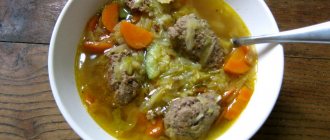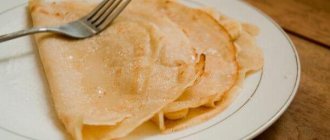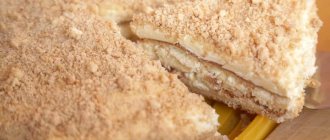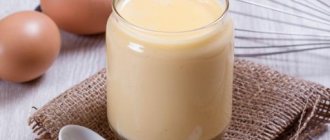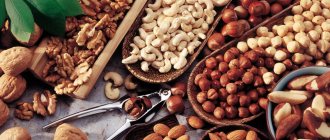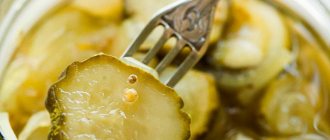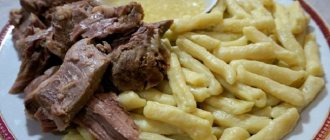Anyone who is at least a little familiar with Vedic culture and the traditional Ayurveda system of Indian medicine has probably tried kitchari. This is the main dish recommended in Ayurveda during cleansing. Kitchari is a combination of cereals and legumes that doubles their nutritional value. In Ayurvedic clinics, the main dish is kitchari. The recipe for its preparation is presented in our article. In it we will talk about the beneficial properties of kitchari and present reviews of people who have undergone cleansing using this method.
What ingredients are needed for kitchari?
To prepare kitchari you need the following ingredients:
- Green mung bean (moong dal) is a type of legume that resembles green peas in appearance. Mung bean helps to activate the body's main detoxification systems - the small intestine, liver, kidneys, and skin. These peas contain about 30% protein of plant origin, which is easily absorbed by our body.
- Basmati rice is a grain that is an excellent sorbent for toxins.
- Turmeric.
- Ginger.
- Coriander.
- Mustard seeds.
- Fennel seeds.
- Zira or cumin.
Experts in Vedic culture recommend using another spice in cooking, the aroma of which is 10 times stronger than that of garlic - asafoetida. This is the only Indian spice that helps digest legumes without producing gas. Without this powder it will not be possible to prepare real kitchari. The recipe for this dish also involves the use of ghee. You can buy all the ingredients for kitchari in special stores of Indian products and spices.
Baked pumpkin with vegetables
Discussion: 4 comments
- Ashoka:
12/13/2018 at 2:45 pmI made it today. The mung bean was slightly undercooked, the rice was overcooked. Mung beans need to be soaked in advance. I found a translation of the Vedas on another site, there is a slightly different recipe (how to cook Kichari). Can vary depending on Doshas and your goals.
Answer
Regina:
12/13/2018 at 5:20 pm
Ashoka, hello! Thank you for sharing your experience with our recipe.
Honestly, I have never had any problems with mung bean or rice using the specified cooking technology. At the same time, khichri always turns out to be a very crumbly dish with good consistency. I can only assume that the quality of the products may differ. I always use basmati rice for this dish. When cooked, the grains become soft, but not mushy.
As for the mung bean, I have time to fully cook it within the time specified in the recipe. Of course, you can soak it. This will even be a plus, as it will help get rid of single, highly hardened grains. It happens that they are found in a pack with mung bean, and even after cooking they do not soften. But you need to fill it with boiling water. You can leave the flooded mung bean overnight, and in the morning sort out small pebbles and low-quality grains that may come across in the general mass.
You are right, according to Vedic culinary traditions, there are indeed several options for preparing khichri. On our website we have offered an option that is suitable and accessible to everyone. In this case, a person will not need to delve into the study of Doshas or look for the required percentage of foods in dishes. You can take a ready-made recipe and follow it.
Our blog also presents another option for preparing this dish - gili khichri. Perhaps I will later consider and offer our readers other variations.
Answer
12/14/2018 at 7:09 pm
Hello! I have prepared this dish several times already. Delicious). The trick is that 700 ml of water turned out to be too much for my dish, now I pour 2 to 1, as it should be for the basmati that I take. I have a question about whether there is a difference between cumin and cumin. Most sites on the Internet say that it does not exist, however, I found one source with different information on this matter. The authors refer to The Great Cookbook of Spices, and it turns out that cumin and cumin are different. In India they don’t change recipes, but for now I use cumin instead of cumin and a mixture of peppers instead of just red/black (where necessary), I haven’t bought asafoetida yet. I believe that this will not greatly harm the benefits of the dish, it will just have a different taste. Ideal, of course, to try the original). If not in India, then there is the Khajurao restaurant at the 1905 metro station, where the Indian ambassador himself frequents). I haven’t been there myself yet, but I plan to).
Answer
- Vedich:
12/14/2018 at 8:00 pm
I brought the discussion of the recipe to the forum, because... The recipe is not easy. Let's continue our further discussion there. Darislava, please duplicate the question in the specified topic.
Answer
Kitchari: Ayurvedic recipe
It is very easy to learn how to prepare a dish that is used for cleansing according to Ayurveda. The main thing is to choose the right bouquet of spices that reveal the taste of kitchari.
The recipe for preparing the dish consists of performing the following sequence of actions:
- Heat ghee (2 tablespoons) in a non-stick pan or deep frying pan.
- Spices are added to the heated oil: mustard seeds, coriander, cumin, fennel (½ teaspoon of all ingredients). As soon as the first crackling sound appears (energy release), ginger powder, turmeric (½ teaspoon each) and a pinch of asafoetida should be added to the heated seeds.
- After adding the spices, add mung bean and basmati rice (1 cup each) to the pan. Cereals are poured with water and cooked over low heat until cooked.
- Salt and pepper to taste, cilantro and other seasonings are added to the finished dish.
Kichari (kitri, kitchari): food for health
Travelers who are “lucky enough” to get sick during a trip to India are surprised when, instead of the usual medicines, they are offered a healing dish called kitchari. This is not surprising: according to Ayurveda, such food has not only nutritional, but also therapeutic value.
At its core, this dish is a mixture of basmati rice with mung beans (the more common name for this legume is mung bean), spices and ghee (clarified butter). In Indian cuisine, shelled mung beans are used (the green shell has been removed).
Adherents of Ayurveda are convinced that kitchari has ideal digestibility, nourishes all tissues of the body, gives vitality, cleansing and rejuvenating the body. This belief is not groundless, since the main ingredients that make up this dish provide considerable benefits:
- Mung bean is a source of protein (its content is about 24%), valuable fiber and minerals: phosphorus, potassium, calcium, magnesium. With regular use, it strengthens the cardiovascular system, normalizes cholesterol and blood sugar levels, as well as blood pressure, and helps strengthen the walls of blood vessels.
- Basmati is the “king of rice”; its peculiarity is that it has harder grains compared to other varieties. This is explained by the fact that after harvesting, each new harvest is kept in special storage facilities for at least a year. The longer the aging period, the higher quality the basmati is considered. Compared to regular rice, it has a lower glycemic index and higher mineral content.
- Ghee is melted butter that does not contain impurities such as water and lactose. According to Ayurveda, it is one of the most beneficial foods that activate the digestive processes. When heated intensely, it does not release carcinogens.
Rice, mung bean, ghee and spices are the main components of the main Ayurveda dish
Mung beans and rice in the central dish of Ayurveda are combined with spices, each of which not only gives the dish a bright taste, but also endows it with special properties. For example, asafoetida (aromatic resin from the roots of the Ferula asafoetida plant) facilitates the digestive process and prevents gas formation, ginger tones, thins the blood, eliminates lethargy and apathy.
The amount and types of spices used to prepare khichhadi depend on the dosha, which determines the constitution of the person for whom the dish is intended.
Kitchari recipe from Yogi Bhajan
Spiritual leader Yogi Bhajan once prepared kitchari according to the following recipe:
- Pour 1250 ml of purified water into a pan with prepared water, put moong dal (250 ml cup) in it, let it boil and cook for 30 minutes until half cooked.
- Add basmati rice in the same volume to the pan after the mung beans begin to boil.
- Yogi Bhajan's recipe for kitchari is prepared with vegetables (3 cups). You can use carrots, cauliflower, broccoli, asparagus, zucchini and other vegetables.
- In a frying pan with ghee or vegetable oil (2 tablespoons), onion, garlic (3 cloves) and finely grated ginger (¼ root) are fried. As soon as the onion becomes transparent, add turmeric (1 teaspoon), red and black pepper, cardamom seeds (¼ teaspoon), ground coriander, Indian garam masala spice mixture, cumin (½ teaspoon each). When the spices in the pan are sufficiently fried, they can be transferred to the pan.
At the very end of cooking, salt or soy sauce is added to the thick kitchari soup to taste.
How to cook
Before you start cooking Kichari, you should soak the lentils in water for 30-60 minutes. This is necessary so that both the lentils and the rice reach the same degree of readiness. If you cook them at the same time, then either the rice will be boiled, or the lentils will still be hard. Next, heat the ghee. We add all the spices in grains and then in powder.
We turn the heat to low and stir until the mixture darkens and a strong, spicy aroma appears. The main thing here is to make sure that the spices do not burn. Add rice and mung bean to the mixture of oil and spices, mix everything thoroughly so that the aroma is absorbed, add water and salt. When the water boils, reduce the heat. Kitchari is cooked until the rice and lentils are completely soft (20 - 30 minutes in total).
The traditional recipe includes:
- 1 glass basmati;
- ½ cup shelled green lentils;
- 4 - 5 glasses of water;
- 2 tablespoons melted butter;
- ½ teaspoon each of ground cumin, coriander, turmeric, asafoetida;
- 1 teaspoon ginger powder;
- 1 teaspoon black mustard seeds;
- a little salt to taste.
You can vary the ratio of lentils to rice. It all depends on how much you need to cleanse the body. The stronger the need, the more rice and less lentils you need. There are also alternative methods for preparing Khichri. The technique and sequence of actions are the same, only the ingredients may differ. For example, you can add coconut, cinnamon, cloves, bay leaves, black pepper, and fresh cilantro leaves to the traditional recipe.
https://youtube.com/watch?v=Dqq_ylcBqGU%3Ffeature%3Doembed
Kitchari from Gurubachan Singh: recipe
Yogi Gurubachan Singh offers his recipe for making kitchari. He uses practically no spices (except for ginger) and does not add salt to his dish, and uses white hulled or yellow mung bean as the main ingredient.
The recipe for kitchari from Gurubachan Singh is as follows:
- Mung bean (1 cup) is soaked in clean water 2 hours before cooking.
- Pour 8 cups of water into a saucepan and bring to a boil.
- Mung bean is placed in boiling water and cooked for half an hour.
- After 30 minutes, rice (1 cup) is poured into the pan.
- In a frying pan with ghee (1 tablespoon), chopped onions (2 pieces), grated ginger (2 cm piece) and garlic (2 cloves) are fried.
- When the rice and mung bean are cooked until tender, they are transferred to a deep frying pan with the fried onions and stirred.
Kichari according to this recipe is prepared without salt, but if its taste seems too bland, you can add a couple of tablespoons of soy sauce.
Preparation
- First, we should prepare the ingredients that we will need for this recipe. This is rice, mung bean peas and spices.
- At the first stage, it is necessary to soak both types of cereals. It is advisable to leave both rice and mung bean (can be in one pan) to soak for one to two hours. If you don’t have time at all, you can pour boiling water over the cereal and let it sit for 10-15 minutes.
- Now you need to put the pan on the stove, turn on low heat and put the ghee into the container. You can also use butter in the absence of ghee. Any of the products must be melted until light foam appears (see photo). Next, you need to pour ground cumin, turmeric, coriander and asafoetida into a pan with oil. Stir the mixture over low heat, cooking the mixture until the spices become darker and begin to smell strong. Do everything carefully and carefully, as the spices may completely burn or turn black, which will lead to the fact that they can no longer be consumed.
- Next, take containers with mung bean and rice, butter and spices. Pour the cereal into the oil and mix thoroughly. Continue stirring the mixture for 60-90 seconds, which will allow the rice and mung bean to absorb all the flavors. Now pour the remaining water from the cereal into the pan. At first glance it may seem like there is a lot of water, but this is not so. The cereal will quickly absorb it. And as soon as this happens, you need to add cardamom, ginger and a little salt. Continue cooking over low heat until the rice and mung beans are soft. Then you can remove the pan from the stove.
- That's all, delicious Indian kitchari porridge with mung bean peas is ready. You can put it on plates and try it. If desired, you can supplement the dish with vegetables or meat, it’s a matter of taste. Or you can choose a traditional serving with chapati flatbread and sauce. It turns out to be “finger licking good”. Bon appetit!
One of the rules of Ayurveda is that the duo of basmati rice and mung bean peas is the best combination of the right proteins, an ideal balanced dish that is highly nutritious. Followers of Ayurveda call kitchari the “perfect” food, characterized by ease of digestion, high speed of absorption, and the dish nourishes all cells of the body, promotes their rejuvenation and cleansing. It is great for kapha. Many people replace rice with buckwheat, the result is no less appetizing, and buckwheat is also good for the body.
The beneficial effect of kitchari on weight loss has been proven. The dish is especially useful during a mono-diet, as well as when following cleansing programs, among which we can highlight pancha karma. Eating kitchari is especially effective during a diet combined with yoga.
Traditionally, kitchari is served with an Indian flatbread called chapati. It resembles thin pita bread. This flatbread is made from wheat flour. According to the classic recipe, it is baked directly over an open fire. Various sauces are also served with chapatis. The flatbread is dipped in them and then the kitchari is scooped up with it.
Kitchari recipe in a slow cooker
Cooking kitchari in a slow cooker is carried out in the following sequence:
- The multicooker mode “Frying” is selected. Place ghee (5 tablespoons) in the bowl of the appliance and heat it up well.
- Pour cumin seeds (1 teaspoon) into a hot bowl. After a couple of minutes, add grated ginger (1 teaspoon), turmeric and salt (2 teaspoons each), and asafoetida (½ teaspoon).
- Sliced zucchini, a little cauliflower and a pod of hot pepper, peeled from seeds, are laid out in aromatic spices.
- Lastly, washed mung bean (100 g) and rice (120 g) are poured into the bowl. All ingredients are poured with water (1 l), the multicooker lid is closed and the “Rice” or “Pilaf” mode is set.
- After 40 minutes, aromatic and healthy porridge will be prepared in the multicooker bowl.
After cooking, kitchari, the recipe for which is presented above, is poured with lemon juice (2 tablespoons), sprinkled with herbs and black pepper. The dish is served warm.
Khichri recipe for different doshas
Kapha dosha
- Instead of oil, use water to simmer the spices in before adding to the rice and dal.
- In general, instead of rice, you can use quinoa (quinoa), millet or amaranth.
- If you still use oil for frying spices, add a 1.5 centimeter piece of ginger, grated.
- While cooking, season with a pinch of cayenne pepper.
- Use half as much oil.
- The best vegetables for kapha are leafy greens, Brussels sprouts, cauliflower, asparagus and celery.
Pitta dosha
- Use half the mustard and black pepper, or omit the mustard altogether.
- Instead of ghee, you can use coconut oil.
- The best vegetables for pitta are leafy greens, broccoli, cauliflower, asparagus, zucchini and carrots.
Vata dosha
- Use twice as much oil.
- Add a pinch of cayenne pepper when cooking.
- Add one and a half cm of grated ginger root to the spices while frying.
- Take twice as much rice.
- You can also use quinoa instead of rice to get more protein.
- The best vegetables for vata include carrots, zucchini, sweet potatoes and asparagus.
Khichri for vegans : use vegetable oil instead of ghee.
How to lose weight with kitchari?
People who have repeatedly tried to lose weight using various diets know how difficult it is to experience a constant feeling of hunger while losing extra pounds. Ayurvedic treatment involves natural loss of excess weight by cleansing the body of waste, toxins and other harmful products. The essence of this diet is to eat only kitchari for 7 days at least 3 times a day.
The recipe for weight loss is based on the preparation and consumption of the following dish:
- For kitchari, a glass of rice and mung bean is soaked in cold water.
- In a thick-bottomed pan, sliced ginger (root 3-4 cm long), cumin and cardamom seeds (1 teaspoon each) are fried in ghee (3 tablespoons).
- When the seeds in the frying pan begin to crackle, add mung bean, rice, turmeric (1 teaspoon) and a pinch of salt.
- Lastly, water (6 tbsp) is poured into the pan.
The diet lasts 7 days, and after another 10 days it can be repeated again. In two months of eating this way, you can lose 10 kg.
Benefits of kitchari for the body
The beneficial properties of kitchari for the body are as follows:
- The combination of moong dal (mung bean) and rice is considered ideal for normal bowel function.
- Kichari is optimally balanced in protein composition, which ensures easy digestion and maximum absorption of protein by the body (85%).
- Strength appears and vitality increases.
- The course of all metabolic processes in the body improves.
- The body is cleansed and its cells are rejuvenated.
- Excess weight goes away, well-being improves.
- The condition of the skin and hair improves.
The main thing is that the cleansing course, or mono-diet, is as painless as possible for the body. There are no restrictions on vitamins and nutrients, since the body will still receive all of them, but from other foods: legumes, grains, vegetables, spices.
Cleansing with kitchari: reviews
People who have completed a mono-diet course based on seven-day consumption of kitchari speak about it as follows:
- the diet allows you not to suffer from a constant feeling of hunger;
- for 7 days the body receives healthy nutrition;
- The duration of the diet is optimal for obtaining decent results.
The basis of the diet is the consumption of kitchari for 7 days (the recipe is presented above). During this time, you manage to put your thoughts in order and sort out your diet, lose a few extra pounds and normalize your intestinal function. A mono-diet on kitchar is an easy cleansing of the body, in which you do not need to endure the feeling of hunger and you can continue to work as usual.



